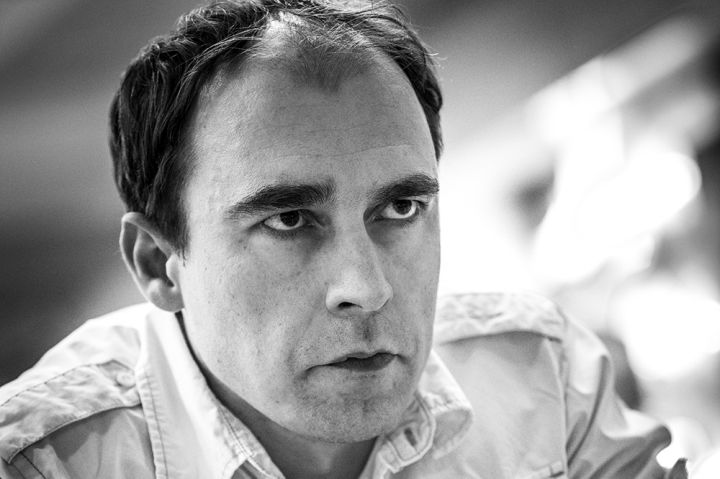Interview with Kaido Kulaots
The A group of the Aeroflot Open is considered to be one of the strongest open tournaments out there. In fact, so many strong players participate in this event, the winner is provided a direct entry to the super-tournament in Dortmund along with €18,000 as prize money. This year we had 101 players from 22 countries with 71 GMs and 21 IMs. There were six players above the Elo of 2700 and 39 were 2600+. The biggest contenders for the title were the young stars like top seed Wei Yi, World Rapid Champion Daniil Dubov, the defending champion GM Vladimir Kovalev, the 2017 winner Vladimir Fedoseev and many other well-accomplished GMs. No one in their wildest dreams would have imagined that the 62nd seeded GM Kaido Kulaots (2542) would win it ahead of such a field.
It's not that Kaido is not a strong GM. He Estonia's number one, and has been for many years and has won the Estonian national championships eight times. But with a rating of 2542 he was not even remotely the favourite to win the title. How did Kaido manage? After the Aeroflot Open ended, ChessBase got in touch with Kaido and did a detailed interview with him revolving not just around his psychology and mindset, but also some of the most interesting chess moments in the games that he played.
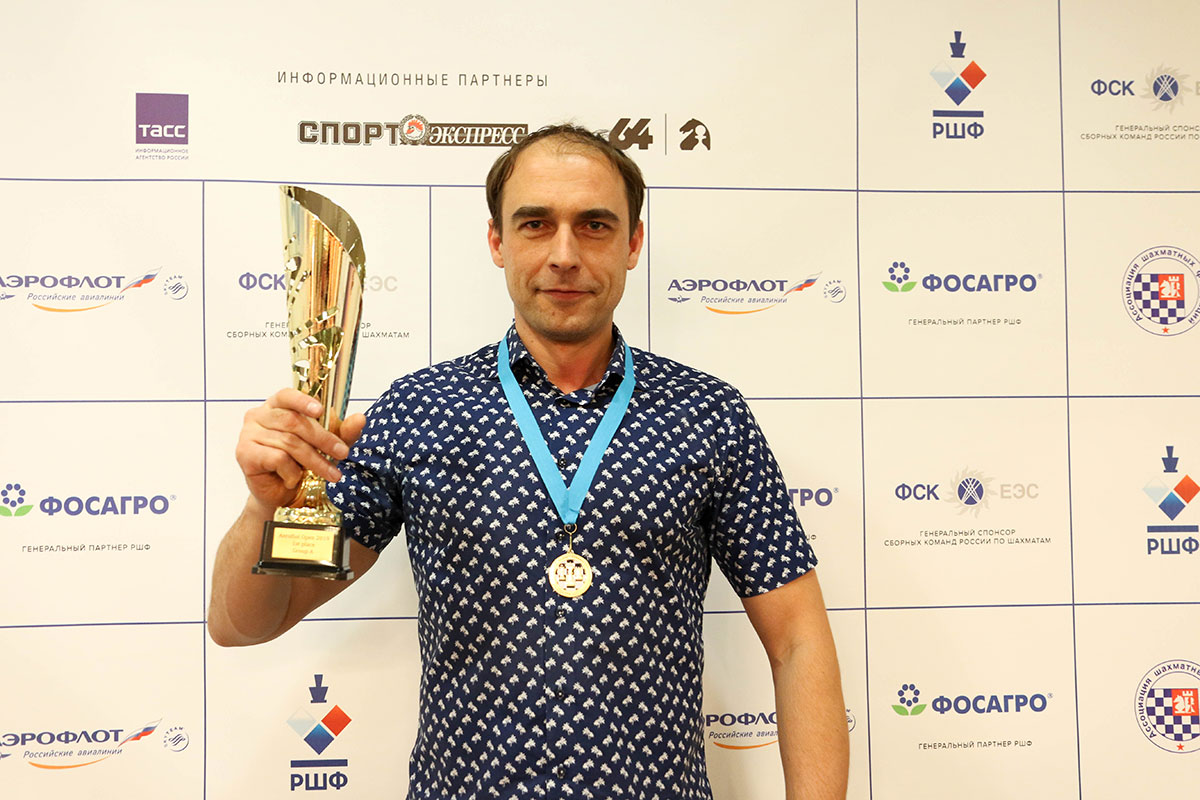
Winner of Aeroflot Open 2019 — Kaido Kulaots from Estonia | Photo: Eteri Kublashvili
Final Ranking after 9 Rounds
| 1 |
62 |
GM |
Kulaots Kaido |
|
|
2542 |
7,0 |
5 |
2647 |
| 2 |
28 |
GM |
Martirosyan Haik M. |
|
|
2616 |
7,0 |
4 |
2563 |
| 3 |
11 |
GM |
Sasikiran Krishnan |
|
|
2678 |
6,5 |
4 |
2607 |
| 4 |
3 |
GM |
Wang Hao |
|
|
2714 |
6,0 |
5 |
2600 |
| 5 |
1 |
GM |
Wei Yi |
|
|
2733 |
6,0 |
4 |
2589 |
| 6 |
30 |
GM |
Chigaev Maksim |
|
|
2613 |
6,0 |
4 |
2586 |
| 7 |
7 |
GM |
Inarkiev Ernesto |
|
|
2692 |
6,0 |
4 |
2580 |
| 8 |
21 |
GM |
Sarana Alexey |
|
|
2630 |
6,0 |
4 |
2573 |
| 9 |
15 |
GM |
Anton Guijarro David |
|
|
2642 |
6,0 |
4 |
2557 |
| 10 |
43 |
GM |
Tabatabaei M.Amin |
U18 |
|
2590 |
5,5 |
5 |
2613 |
| 11 |
9 |
GM |
Korobov Anton |
|
|
2687 |
5,5 |
5 |
2585 |
| 12 |
47 |
GM |
Vaibhav Suri |
|
|
2575 |
5,5 |
5 |
2577 |
| 13 |
13 |
GM |
Sjugirov Sanan |
|
|
2663 |
5,5 |
5 |
2558 |
| 14 |
23 |
GM |
Paravyan David |
|
|
2627 |
5,5 |
5 |
2536 |
| |
60 |
GM |
Hakobyan Aram |
U18 |
|
2545 |
5,5 |
5 |
2536 |
| 16 |
25 |
GM |
Khismatullin Denis |
|
|
2621 |
5,5 |
5 |
2526 |
| 17 |
35 |
GM |
Deac Bogdan-Daniel |
U18 |
|
2603 |
5,5 |
4 |
2647 |
| 18 |
32 |
GM |
Lupulescu Constantin |
|
|
2610 |
5,5 |
4 |
2640 |
| 19 |
61 |
IM |
Sychev Klementy |
|
|
2545 |
5,5 |
4 |
2609 |
| 20 |
29 |
GM |
Zhou Jianchao |
|
|
2615 |
5,5 |
4 |
2601 |
Complete list
Sagar Shah (SS): Kaido, congratulations on the victory. What does it mean to you to win the Aeroflot Open 2019?
Kaido Kulaots (KK): Many thanks! It is very special for me for sure. And it also seems to confirm that I am able to play chess on a very high level.
SS: Magnus Carlsen tweeted after your victory. Do you remember this event with Magnus and his father as your flatmates?
KK: It was very pleasant to receive congratulations from the World Champion himself. I remember that event very well. This was my very first time to play at the famous Gausdal tournament. It was being organized by Hans Olav Lahlum. A number of participants were accommodated in convenient ski houses (Norway is a skiing-crazy country) and so it happened that I was sharing one with Henrik Carlsen and his son Magnus, who had turned nine a month and a few days ago. Henrik was interested in the opinion of me as an accomplished player (although I had not yet become a GM by then) about the future prospects of his son. I had time to get to know Magnus a bit better and then I made a polite prediction: provided continuous interest in chess and good work, he could become a strong GM, even 2650!
SS:Let’s have a look at your games! Four wins with the black pieces! And three of them in the Sicilian. You surely were in fighting mood!
KK: It is of course also a good idea to play in Aeroflot just to get a very strong tournament. But when playing for top honours, one is simply obliged to be in a fighting mood. If I would not have been in such a fighting mood then I would have chosen to play the tournament B instead! The thing was that when I registered for the tournament, I was still 2550+, but I informed the organizers that by the start of Aeroflot I would be sub-2550 player. This is the figure that is officially the lower limit of tournament A. The organizers left the choice to me. I replied that if you are so generous, I will take tournament A. This has been one of my best decisions!
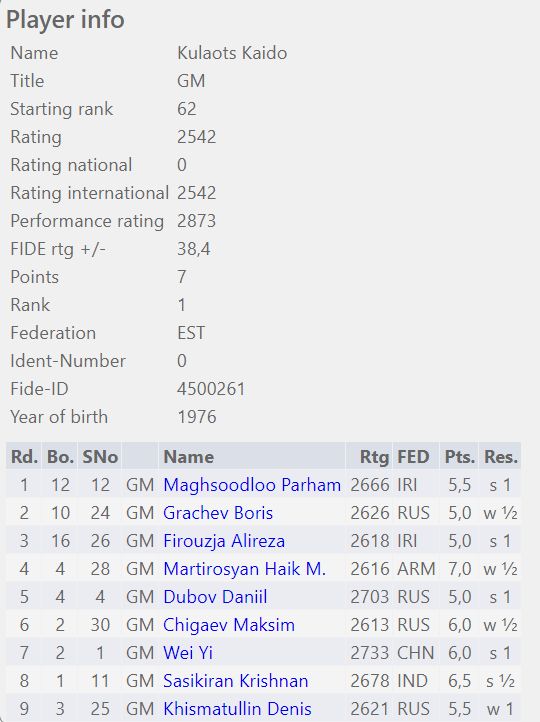
A snapshot of Kulaots' fantastic performance at the Aeroflot Open 2019
SS: You played the in-form Parham Maghsoodloo — the current World Junior Champion in round one. His recent achievements have been quite formidable. Were you intimidated?
KK: I played against Parham at the Batumi Olympiad and he beat me in a very impressive manner. I mean, I was even impressed myself. I thought, I was functioning not badly during the game and did not perceive myself of making any mistakes, but nonetheless soon ended up in finding myself under terrible mating attack. So I did have a very good idea whom I was dealing with.
SS: That was truly an impressive game by Parham. At the Aeroflot Open, however, you managed to take your revenge. Tell us about this pawn sacrifice, it was very thematic.
KK: This sac was not my initial idea. But the more I looked at the position, the more it appeared to me that the position requires dynamic and urgent means. Playing too timidly, Black might run the risk of being squeezed positionally. I remember well how his light-squared bishop dominated the position in Batumi. Now it was my time to make something good with mine. And the one on g7 turned out to be a monster indeed.
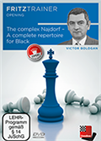 When choosing an opening repertoire, there are days when you want to play for a win with Black, when you want to bear down on your opponent’s position with a potentially crushing attack. The Najdorf is perfect for just such occasions. Strategy, combinations, attack and defence, sacrifices and marvellous manoeuvres — exciting chess is all about the Najdorf!
When choosing an opening repertoire, there are days when you want to play for a win with Black, when you want to bear down on your opponent’s position with a potentially crushing attack. The Najdorf is perfect for just such occasions. Strategy, combinations, attack and defence, sacrifices and marvellous manoeuvres — exciting chess is all about the Najdorf!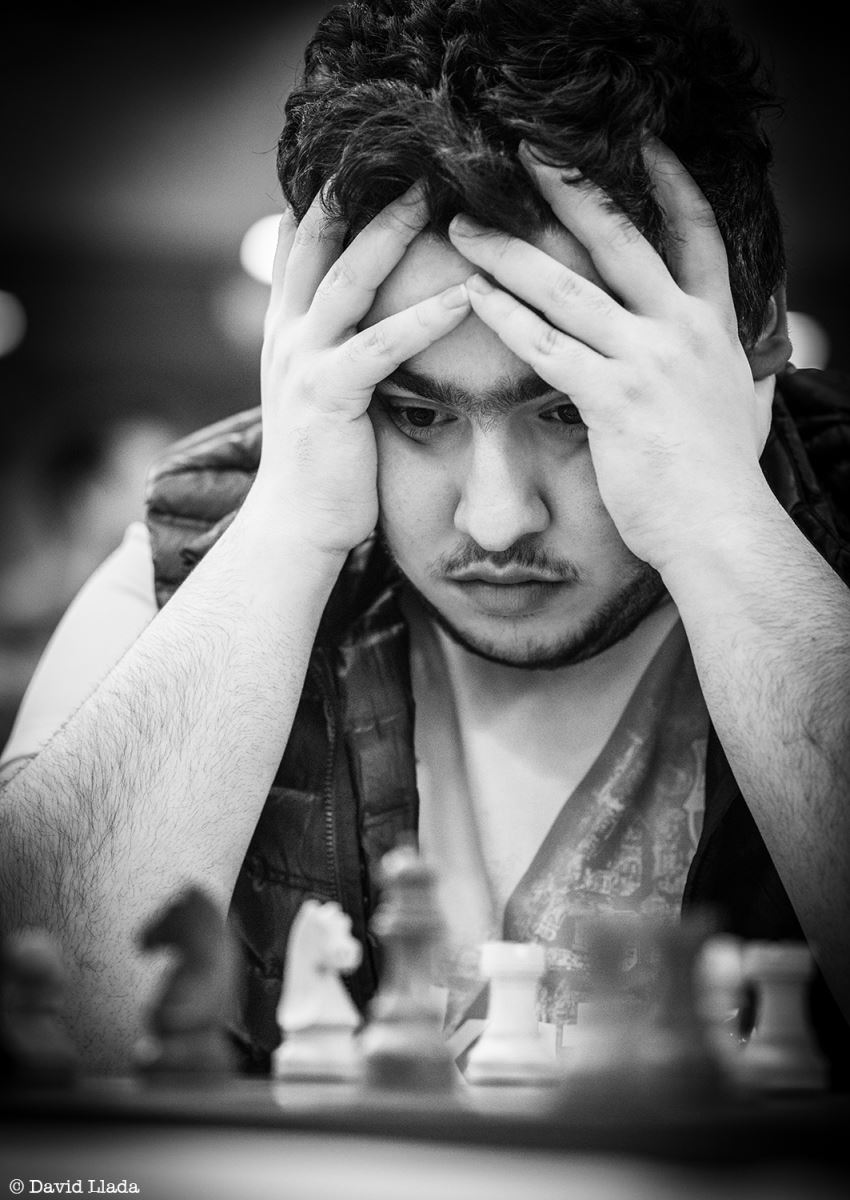
Parham Maghsoodloo was Kulaots' first round opponent | Photo: David Llada
SS: Your third round opponent was another Iranian talent Alireza Firouzja. Against such youngsters, people try to take the game into quiet waters with openings like 1.e4-e5, but you stuck to your Najdorf, unperturbed!
KK: He is still a very young and extremely talented player (as many could witness in St. Petersburg, just to name one world-class event). I could not rely on the idea that with the simple and positional reply 1...e5, I would immediately take him out of his youthful comfort zone. I am sure, he is already mature enough to navigate classical and positional settings on very high level as well. Instead, I put my bets on the line, where I definitely have more experience. And I trusted that my head would be in sufficient shape enough to do all the necessary calculations as well. So Najdorf it was!
SS: g6 is a thematic move in the Sicilian, but still what were the calculations going on in your mind when he played this move?
KK: g6 was certainly one of the top two candidates that crossed my mind when heading for this position. I did not really calculate too much before he made this natural push. I just knew that arising complications should not be unfavourable for black, to put it mildly. This conviction came from my understanding that compared to the games that I knew being played with this line (I have been on white's side too!), black has a very favourable version. So I should be able to work out the details once he makes this pawn push. I just knew what I should not have done in reply. I should not have panicked, despite White being the first in creating a contact around enemy king's shelter. And panic I did not! Normally Black needs to work much more to blow up the queenside with the pawn on a3. In the game it was smooth. The main danger was now however not to relax prematurely with a score of 2½/3.
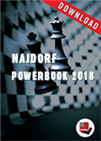 The Najdorf Powerbook 2018 is based on an incredible 3.2 million games! The lion's share is provided by the engine room on playchess.com, with the addition of 72,000 games from human experts.
The Najdorf Powerbook 2018 is based on an incredible 3.2 million games! The lion's share is provided by the engine room on playchess.com, with the addition of 72,000 games from human experts.
Alireza Firouzja is one of the brightest talents in the chess world
SS: In your next round you faced Daniil Dubov. You chose 1.c4 e5 2.♘c3 ♝b4!? There is a video on ChessBase India channel — Dubov vs Anand which shows Dubov winning against five-time World Champion in scintillating fashion in the same opening. Were you aware of this game?
KK: The game against Daniil was played as an evening game on the double round day. Understandably the time for preparation was rather limited. When I found out that I was going to play with black against Dubov, I was not overly enthusiastic. You are playing one of the most fruitful generator of original (and effective) opening ideas of modern times and you are playing black, while virtually having no time for preparation. I played him in 2016 at European championship, prepared then for solid many hours and still had an opponent sitting over the board who blitzed out his first 20 or so moves. Back then it was an English opening and as a reply I chose a line, which had just had been popular at the Candidates tournament. After losing that game (after being outplayed in the opening I eventually lost because of being outplayed in the endgame), I had a very brief talk with Nils Grandelius, to whom I said that yes, I lost, but then proudly added that for long I was playing along the lines that the big boys had just played in Moscow. Nils just shrugged and asked — "Why did you play the popular line from the Candidates?"
So this time around I wanted to play something solid, but not exactly the same stuff that we had seen in Carlsen-Caruana a few months back. Especially considering that I had been reading a big interview in New in Chess, where Daniil describes amongst other things his experience as second of the World Champion. The line I chose has many times been employed by Anand. I was also aware of his game against Dubov. This game he lost, but I would have a lot more time to think over the position. I knew that the line itself is solid enough and it would also come at least as a minor surprise to Daniil. Although I still was a bit afraid of possible bombs waiting for me as my playing experience in this very line was not extensive, to put it mildly.
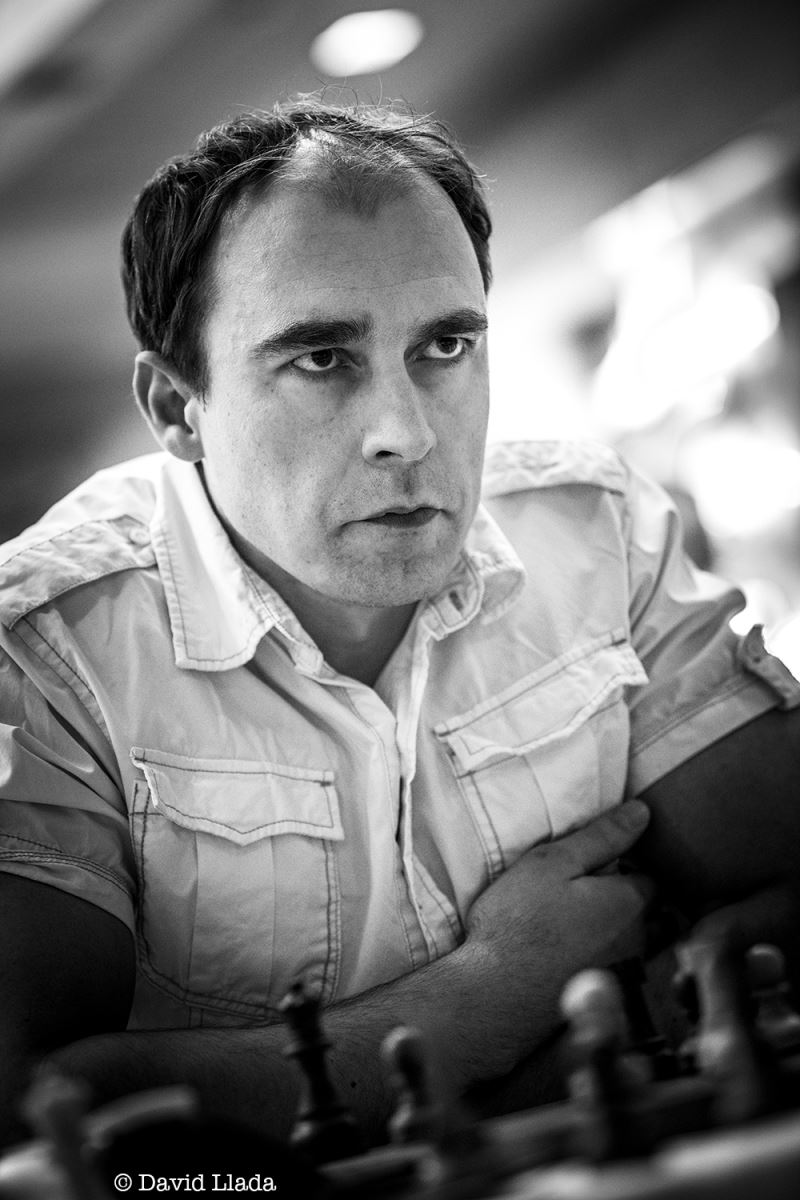
The look of a man on a mission!
SS: It was a very complicated game. Where do you think Dubov went wrong?
KK: This time I managed to get Dubov thinking in the opening for longer than I did in Gjakova. He in return wisely managed to drag me into the type of position of which I had no understanding whatsoever. I managed to interrupt his castling, but this was about my only achievement. I quickly understood that in order not to collapse shortly, I will urgently need to put on my toughest resistance mode. He took some interesting decisions, transforming one advantage to another. And then he decided that the time was right (and on my clock low) to move in for the kill. The idea was decent, but before doing so, it was advisable to take some precautions regarding the other flank of the board. As he proceeded, he allowed me to start creating tangible play on the queenside. This activity was also psychologically important to me so that I could make some tough defensive moves around the king to prevent it from perishing. When I passed the time trouble without blundering anything, I understood that White´s chances of survival are already of an accidental nature. I managed to finish the game with not too complicated, but lovely tactics.
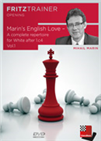 The first DVD includes the systems 1...e5, the Dutch and Indian setups.
The first DVD includes the systems 1...e5, the Dutch and Indian setups.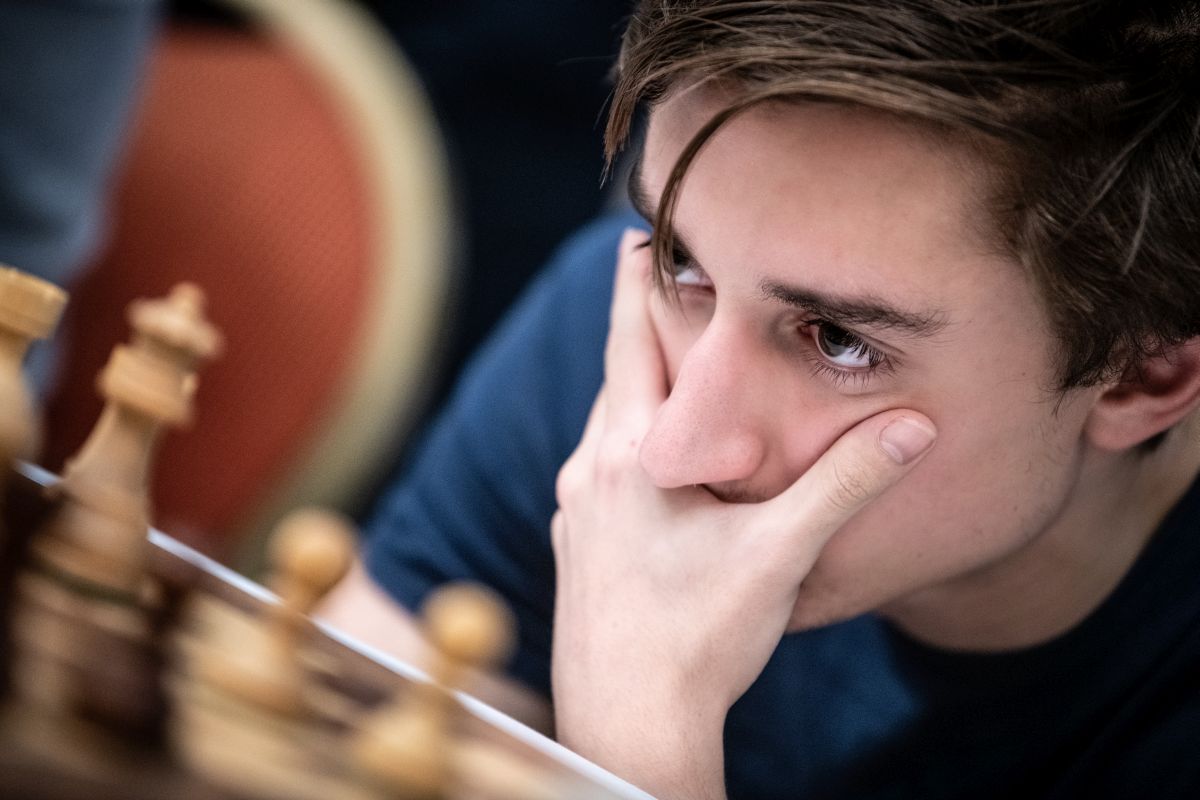
A tremendous fighter, and an opening expert, Daniil Dubov — the current World Rapid Champion | Photo: David Llada
SS: After the win against Dubov, you were on 4.0/5. You then faced Chigaev. In this position (below), did you spot the move ♖xg7?
KK: This was my roller-coaster game in Moscow. I did not play the opening too impressively and black at least equalized. Then from move 18 to 29 I played probably my best series of moves in Moscow. This resulted in reaching an objectively winning position. But it is the kind of winning position that turned out to contain some nice tricks. First, I need to confess of relaxing too early after finding the defensive setup with ♖e3, f4 and ♖g3.
After that I really thought that I was completely winning. This was indeed the case, but then my opponent came up with incredible resource 27…♝d6 28.♗xd6 ♜e8!!
I did not have excessively much time left and now it dawned on me that the game is far from over and I still need to exert myself. Otherwise, I would get very nicely mated by Black's coordinated pieces. I thought as long as I could afford I came up with 29.♘e3, which was indeed the only move. In reply my opponent made a brilliant move, he captured my bishop on d6 immediately! The emphasis being on the word immediately. To which my reply was the reflex capture of the bishop on f5. Of course, if you set up this position for solving to any more or less decent player, he or she would take on g7 in a heartbeat. I however made this recapture of a piece, because he had just captured my piece. This flawed course of action could have cost dearly. Maxim in return missed his chance of winning. Instead of sophisticated knight jump backwards he needed to jump forward with it. After that the famous tandem ♕+♘ would have caused sheer havoc around my king.
After ...♞e6 I managed to reassume the control with a clever knight check (♞h6!+) of my own and after some too safe pre time control moves we arrived at a position, which I considered technically winning. I was an exchange up and his pawns were crippled.
White is technically winning, but in a practical game, there are always some chances It is not such an alien phenomenon that the level of play drops dramatically after the time scramble is finished. You do have much more time on the clock, but very often you simply are not able to exert yourself to the necessary extent. You praise yourself for passing the time scramble phase more or less unscathed and think that the rest will be delo techniki — a matter of technique. In reality this very technique might fail you horribly. And so it happened also with me. Move after move it started to dawn on me that things are getting more and more difficult.
But I really could not imagine in my most horrible dreams that at one moment I even crossed the point of no return.
I of course considered his 53…♞e3!!, but I had [54.♖b4+] ready. He would take on f3, I place my rook on d4 and just push my b down the board. It would have been a rude awakening if he had played this anyway, but instead of capture on f3 gone [54...♚g3]! There is no salvation then for White! His crazy pawn structure just prevents every kind of possible checks with the rook and I am getting mated. Wow.
Instead, Maxim played 53…♚xf3 and offered a draw on the next move. But I was completely sure that I was risking zero and told him that I would like to play on. Yes, I was again winning, but the time was ticking mercilessly. And then in the very end I made a tragic mistake in move order, which lead to the complete liquidation of forces. Yes, I understood that it was a big miss and for some time I was emotionally very low. (I had yet no idea, that at couple of points I had been losing too), but I managed to come out of this better than usual. I do think that it helped a great deal that my next opponent was extremely strong, the first seed of the tournament. Rational part of me knew very well that I will need to give my absolute best again.
The positional exchange sacrifice is one of the most powerful and fascinating strategic weapons in chess. On this DVD Sergey Tiviakov explains why the positional exchange sacrifice is such a strong weapon and how to use it.
Continue to Part II of this interview...
